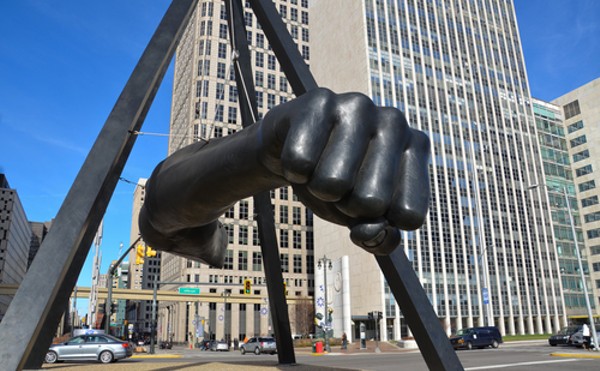The old Roosevelt Warehouse on the edge of Corktown has the aura of a graveyard. It’s as if this is the place where knowledge went to die.
Located at 2025 14th St., it sits in the shadow of the hulking Michigan Central Station. Once owned by Detroit Public Schools, the four-story structure was sold “as is” after a fire swept through part of the building in the late 1980s.
It’s now owned by the Detroit International Bridge Co., which also includes the long-vacant train station in its holdings. According to the city’s Buildings & Safety Engineering Department, the Roosevelt has been idling on the list of structures to be demolished since 1997. A permit to tear the place down was obtained in 2001, but, obviously, the wrecking ball hasn’t swung yet.
It’s impossible to tell how much damage was caused by the original blaze, and how much has occurred in the years since. What’s astounding, after years of scavenging and decay, with water pouring in through a massive hole in the roof, is how much material remains.
Textbooks dating from the mid-’80s are piled in high mounds. The entire curriculum is covered: English, science, math, history. There is something forlorn about seeing so many texts abandoned to rot.
And it’s not just books. Art supplies are in abundance. Watercolor sets and bottles of tempera paints, chalk and crayons and markers and bottles of powdered paint — all can be found scattered across the floors of the warehouse, much of it still sitting in boxes never opened.
There’s lab equipment as well. White plastic bottles containing chemicals like magnesium chloride and oxalic acid and sodium borate stand mute sentry on steel shelves, untouched for more than two decades. Thousands of glass microscope slides are strewn across the floor. There are even small, slender brushes for cleaning test tubes.
There are world maps and cassette tapes and record albums, drinking straws and soap dispensers and bug sprayers. Around every corner comes some new oddity, like the pile of collapsed footballs, puckered like raisins, or huge hand-washing basins that are at least five feet in diameter.
Although abandoned, the Roosevelt is not unoccupied. One of the residents, a homeless vet, took us on a tour. Visitors are fairly frequent, he says. Kids coming in from the suburbs looking for adventure crawl through a hole in the fence that is supposed to block access.
“I’ve been getting the education I never got in school,” the man says, laughing, as he lifts a geometry text from the mountain of books.
Send comments to [email protected]




